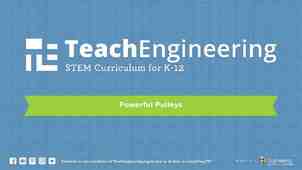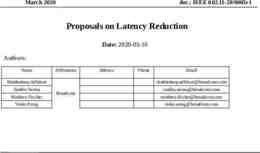Standardization and Digitization of Visual Inspection for
14 Slides3.83 MB
Standardization and Digitization of Visual Inspection for Shipbuilding NSRP Surface Preparation and Coatings (SPC) Project
Past NSRP SPC Projects An initial project successfully modified COTS (Commercial Off-The-Shelf) technology to output QA data in accordance with requirements of NAVSEA Standard Item 009-32. NSRP SPC Projects completed Phase I: Electronically populated the NSI 009-32 appendices Phase II: Customized app functionality, OOS flagging, storage recall and communication between government and contractor Phase III: Implementing paperless paint
Past NSRP SPC Projects Once the system was developed, the project team worked with Regional Maintenance Center QA representatives to identify a path forward to integrate the paperless capability into the Navy Maintenance process. Features which take advantage of the paperless technology in the QA process include: Electronic event notification Auto-flag out of spec conditions Automate Non-Conformance reporting and resolution Quality control reports for contractor process improvement Deck plate sign offs Audit tracking for reports after sign off
Benefits of Paperless QA System PROCESS IMPROVEMENT Increase transparency of inspection to the welding process Improve efficiency of inspection efforts Transmit inspection data efficiently to decision-makers Archive inspection data for future use Leverage inspection data to its fullest extent COST REDUCTION Minimize or eliminate delays associated with adjudication of out-of-spec items Reduce inspection cost Expedite decision making, reducing analysis cost and associated downtime Eliminate costs incurred to re-create history for assessments More accessible information could be used for more efficient planning, facilitating process improvement, troubleshooting, etc.
Current NSRP SPC Project: tandardization and Digitalization for Visual Inspection for Shipbuilding Visual Inspection Technology Offline capable easy-to-use field data collection tool Document issue resolution in real time Rapid implementation with quick ROI Quickly update risk profile and asset strategy Organizes and simplifies the collection, workflow, aggregation and reporting of visual inspection data Standardizes responses to see trends
Business Case Visual Inspection with TruQC Task Before TruQC After TruQC 60 minutes 10 minutes 8 hours (avg) 4 hours Report Generation 4 hours 5 minutes Engineer Review 1 hour 1 hour (now real-time updates) Conflict Resolution (days) (hours) Strategy Update 1 hour 1 hour Preparation Inspection
Standardization & Digitalization for Visual Inspection for Shipbuilding and Repair Identified two inspections: QA Structural Inspection, New Construction Report Compartment Closeout Report
QA Structural Steel – New Construction Report Lists Attribute Code/Description Weld spatter is not removed Defect SOC Weld contours are improper Planning Notches Defect PC Slag Steel Gouges Pipe Fabrication scars Opposition is not correct Structure is unfair. Distortion is present. Machinist Porosity is present Ventilation Undercuts are present Electrical End Melts Not assembled per drawing. Part not fit or parts missing Arc strikes are not ground Shops Linear discontinuities (weld cracks) are present Sub Assembly Metal Outfitting Corner Melts Paint Weld size incorrect Assembly Unity/Block Outfitting Block Assembly/Outfitting On Board Testing/System Completion Burns/Bevels Incomplete Base Metal Repair required Missing Rat Holes Structural welding is not complete Alignment Incomplete fusion is present Additional NDT Required Sharp edges not removed, not properly radius Weld warps are incomplete
Compartment Closeout Report Lists Electrical Cables Steel/Metal Outfitting Hook Ups Hardware complete/tight Power Gaskets Wireways Hydros/Air Tight Connections Hotwork Banding/Packing Cleanliness Hardware complete/tight Tags/Labels Grounding Cleanliness Vent/Sheetmetal Tags/Labels Screens/Flashing Hardware complete / tight System Balances Pipe Pads/Gaskets Hotwork Hardware complete/tights Cleanliness Hydros/Air/Tightness Systems Tags/labels Hotwork Cleanliness Paint Tags/Labels Overspray Removed
Issue Assignment and Inspection Summary Data Issue Assignment Issues identified during inspection are then assigned to a person or craft to begin resolution Progress updated and tracked at every stage Issue annotation within Compartment Closeout Report on iPad Inspection Summary Data All issue data can be pulled at any time using summaries Gives users access to the full scope of issue data during a project or for analysis Issue Tracking tab on TruQC Web App
Shipyard Feedback/Testing Virtual demonstrations of the app were provided to all shipyards and at NSRP panel meetings Software provided for BAE Systems and HII-Newport News Shipbuilding A questionnaire was provided for feedback Tool can be tailored to accommodate unique aspects of the processes in any specific shipyard Common terminology can be digitized for all QA data to improve communication among the US Navy shipbuilding community Questionnaire 1. Need stages of constructions for Repair- Do you have a list? 2. Do you have an area for work items listed for space? 3. Craft List- See the craft list below- any others or edits? 4. Compartment closeout items – this is what we have. Do you have any additions? 5. Rework listing codes- Do you have list? 6. Should the rework code go on modal for both structural and compartment closeout? 7. Any other inspections you think this could work for? 8. What summaries of your data would be helpful – Here are some examples? Any others?
Current Digitalization Efforts Digitalization offers predictive analytics that can drastically help with planning rework and overall time spent on a given job. Related TruQC digitalization efforts include: Using inspection data to develop trends over construction life Using data analytics to make effective changes to the overall QA process Integrating with other software via APO (Application Program Interface) to reduce manual data entry and allow it to flow properly without additional work for users Applying projects like paperless paint and digitalization of inspection to digitalize weld process with new NSRP Panel Project Digitalizing and standardizing environmental and safety reporting Aligns multiple customers (NAVSEA can have “one” process) Provides “quick looks” for conflict resolution
Recommended Path Forward/Conclusion Communication between developers of inspection programs, TruQC, and end users is essential to delivering the proper tools needed for effective digitalization Consistent, clear and accurate data is able to be captured more effectively Digitization of paint QA/QC forms (Appendices of NSI 009-32) has shown an increase in efficiency of coating close-out procedures Efforts to-date have focused on shipyard procedures associated with new build, maintenance, and repair activities Navy uses much of the same information in their management procedures Future digitalization for additional time and cost savings: Expanding digitization to other forms commonly used in Naval corrosion control Complete digitalization of the ship life-cycle Maintenance Requirement Cards, Material Assessment Forms and other
NSRP SPC Project Timeline April 2019: Group brainstorm at Megarust Conference May 2019: Discussion completed at NASSCO SD September 2019: Project update meeting in Rhode Island October 2019: Developed QA Structural Steel Inspection for New Construction November 2019: Contract Completed February 2020: Developed QA Compartment Closeout Inspection May 2020: Received feedback from BAE and NNS June 2020: Standardizing lists between new build and repair July 2020: Testing and paper July/August 2020: Compiling info from NNS and BAE to make changes August 2020: Final product for testing use September 2020: Final paper completed



















